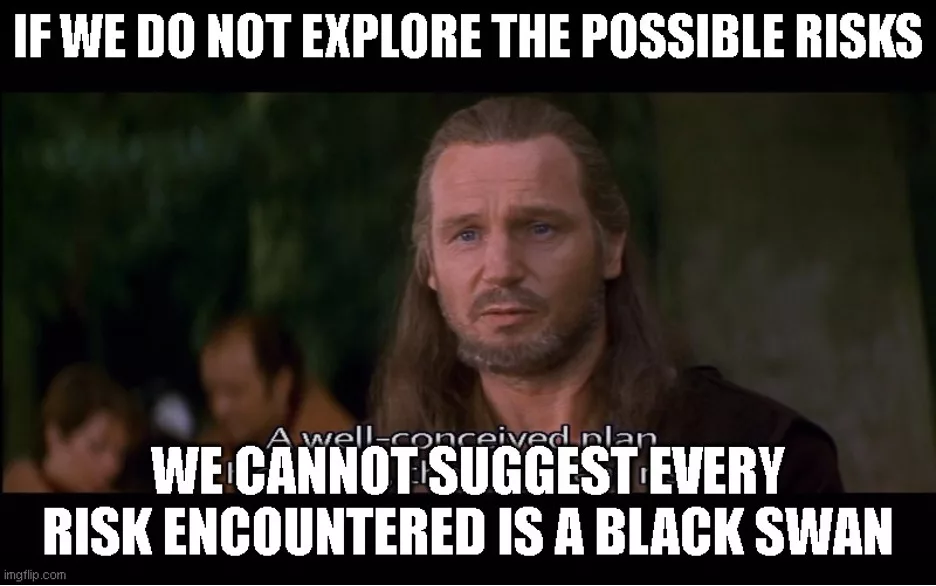
A significant role of the project manager is to identify and manage the risks associated with project objectives. This does not suggest that this is only the project manager’s responsibility. However, it is their responsibility to get the team effectively engaged.
When creating an overview of risk management, we list and describe the processes we will go through to understand and respond to potential risks. This approach is designed to evoke, prioritize, define, and invoke a productive response to risk. Risk management is essential, but as we will see, emerging and sudden risk events (Black Swan events) do not necessarily fit nicely into this formal approach. In our upcoming book, Risk Management Handbook: Managing Tomorrow’s Threats, we outline a process that consists of the following areas:
The Black Swan issue arises from the second-century Roman poet Juvenal’s Satire VI. On this telling, Black Swans were presumed not to exist, and the phrase “rara avis in terris nigroque simillima cygno” (“a rare bird in the lands and very much like a Black Swan”) was common. [1]
How do we predict things with which we have no experience?
We have seen projects encounter situations that could easily have been predicted, yet the project manager and executives are shocked by this outcome. Black Swans are not things we could have thought would occur but rejected, avoided, or produced a suitable response. Some things are predictable even if we have not encountered them in the past. This is the reason for engaging the project team and stakeholders in uncovering those things that may present risks to the project — the identification part of the risk management process. If we neglect this part of the process or perform it haphazardly, we should expect the consequences we reap.
We may be surprised by these events, but if we could have predicted it, then it is not a Black Swan. In our experience, we have seen quite a few times (I know, anecdotal) when a risk happens, and the project manager and team respond, “Who could have predicted this?”

Black Swan events are rare and statistically improbable. Traditional risk management approaches are often based on historical data and probabilities. Black Swans do not have a significant historical precedent, making them difficult to account for in risk assessments. Given these limitations, we can see that with no historical precedent or personal experience, prediction of these events will be nigh impossible. This may seem to contradict the previous section, but it is not so. If we do not explore the possibilities, everything we encounter will undoubtedly surprise us. Even if we perform all measures of diligence as we should, we may still encounter a Black Swan event. The nature of the Black Swan is that we cannot imagine it unless we are very imaginative. We may also consider an event that would be a Black Swan and dismiss it as our experience would tell us that will never happen.

I won’t blow smoke here; the easiest way to identify Black Swan events will be a backward look, post-occurrence. The only way to see these things clearly is through hindsight. However, it is prudent to do what we can to predict Black Swans, especially those that pose the most difficulty for our effort.
1. Brainstorming: Gather a team of subject matter experts (SME) and stakeholders involved in the product development. Hold a brainstorming session to generate a list of potential Black Swan events. Encourage participants to think creatively and consider events that are unlikely but could have a profound impact on the product and its success.
2. External Factors: Consider events that could arise from external factors such as regulation changes, geopolitical events, economic crises, natural disasters, or technological breakthroughs. These events might not directly relate to your product but could still disrupt its development, production, or market reception.
3. Technological Advances: Consider how emerging technologies or unexpected breakthroughs in related fields could affect your product. For instance, a sudden technological advancement that competes with or complements your product might significantly alter the market landscape.
4. Market Shifts: Analyze potential market trends, consumer behavior, or industry dynamics shifts. Consider how sudden changes in demand, competition, or customer preferences could impact your product’s viability.